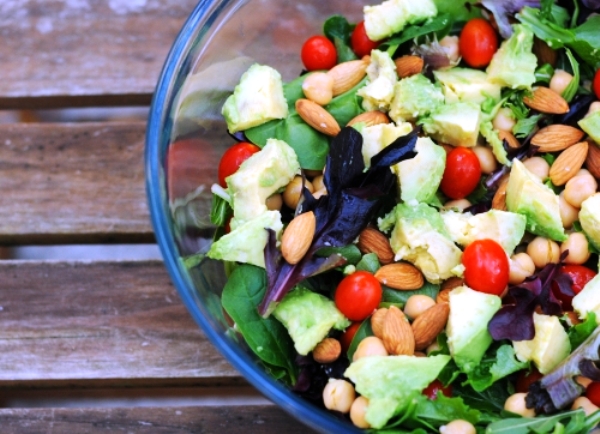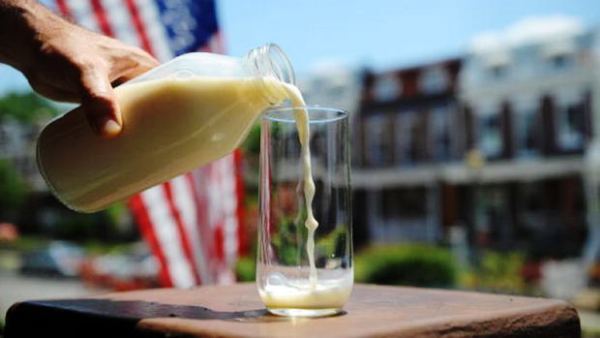
The numbers in this video are alarming. Besides the community outreach program and the mass level healthy eating campaign, it is time for each one of us to rethink our food choices. We have to bring about changes and shifts in our food intake and the food we cook and fill up our plates with. These little changes can trigger positive outcomes for the whole nation. Here is how they could help:
- In managing weight and preventing obesity
- In reducing the risk of chronic disease
- In reducing the risk of early death
- In ensuring a long and disease -free life
The foods that form our daily intake can have many negative effects on our bodies; they make our bodies more prone to heart, gastric and weight problems. We may think we are eating healthy but are in for a huge surprise. Due to technological advances, everything nowadays is processed. This may make the food look scrumptious but this food, in fact, has little or no nutritional value. These everyday meals include:
1- Grains:

We have been eating polished rice, refined (white) atta (flour) and maida (finely milled flour). Processing grains may improve its texture, looks and taste but destroys the nutritional value like many important vitamins as well as the bran from the grains. To ensure its full nutritional value, you may want to switch to a healthier alternative such as: whole grains, bran rice, whole-wheat atta, whole grain barley, jai ka atta (oatmeal) and oats. These whole grains provide a substantial amount of intact vital nutrients like dietary fibres, several Vitamin-Bs’ (thiamin, riboflavin, niacin, and folate) and minerals like iron, magnesium and selenium.
2-Pulses:

We cook and eat washed/polished daals like Moong (green gram), Masoor (lentil seeds) and Maash (white daal) etcetera but by washing them, the companies industrially remove the husk and polish them which leave these pulses with zero nutritional value. Better alternatives to these types of daals are: Chilka wali Moong (Green gram with husk), Masoor and Maash because these daals are known to be cooked with their husk providing maximum benefits of eating fibre.
We also eat chickpeas and black gram which are good in their original form. Continue eating these in the same form and anything else which is in its whole form. Other examples of pulses with their high nutritional value are red kidney beans, soya beans, black beans and several other beans. Do remember one-fourth of our meal plates should be lentils and beans.
3- Salads:

According to healthy standards, half of our meal should consist of vegetables and fruits. We, in Pakistan generally eat salads consisting of small portions of onions, tomatoes and cucumbers, and these are usually shared by the whole family! But switching to bigger servings of saladsmade with green leafy vegetables, iceberg lettuce, arugula (rocket salad), salad leaves, mustard seeds, methi (fenugreek), baby spinach and cabbage can be a more fulfilling and healthier choice. You can make your salad more enjoyable and tasty by adding bean sprouts and other raw vegetables with chunks of cottage cheese, depending on your choice to make the salad a side or a main course.
Green leafy vegetables and fruits generally used in salads are rich in Vitamins A, C and K which help build strong bones and increase bone mass density. Green leafy vegetables are also known be rich sources of many flavonoids and phytochemicals that act as anti-oxidants and are used in preventive measures for many diseases including Cardiovascular heart disease and many types of cancers.
4- Vegetables:

Vegetable curries, shorba or bhaji are all cooked till the vegetables are discoloured. This is done in order to enjoy their optimum taste but leaves no room for nutrients. They might taste good but that is only because of the spices and oil they are cooked in. Make a healthy shift towards quick cooking techniques that preserve colour and nutrients at the same time. Select different coloured vegetables and cook them differently each time; you can sauté, stir fry, steam and grill vegetables using the same desi spices and herbs, making it a healthy move. In shorba salaam (broth) add vegetables in the last five minutes because, as stated before, vegetables can do without being heated for long periods of time.
5- Fried food and oil

To say that our meals consist of a lot of deep fried food would be an understatement. It is time we switched to a healthier lifestyle before it’s too late! A healthier alternative would be switching to shallow frying and consuming fried food as a rare treat. Even if you are a fan of fried foods, try cooking them in minimal volumes of oil because more oil does not mean better taste. We love dropping our food in boiling hot oil, followed by sizzling sounds and a whiff of aroma but the food becomes carcinogenic the moment it boils. We can get the same taste and texture cooking in hot, and not boiling, oil.
6- Sugar

Sugar and cocaine have the same traits; both are addictive and hazardous to our health. Scientists equate sugar with cocaine and consider it no less than a drug. Sugar is addictive, we crave it and all we consume are empty, harmful calories. We have become so used to adding white refined sugar to our teas and coffees – just think of the empty calories we are taking in! You must cut down your sugar intake if you want a healthy lifestyle. Starting having brown un-refined sugar, gurr/jaggery or if you can get maple syrup and stevia; these are sweet, contain nutrition and are not empty calories.
7- Fruits:

One fruit a day for an average adult is enough; there is no need to overdo it. Fresh juices have taken a popular spin since the advent of diets and detox regimes but it is still healthier to eat your fruits and not drink them. Crushing fruits for juicing purposes destroy the soluble fibres and fills your body, instead, with more sugar. This fruit fibre acts as a deterrent for the body and stops it from absorbing excess sugar. Read up on the nutrient content of fruits and try eating more of those that are high in nutrients but low on calories.
8- Proteins:

We eat fat-laden curries, meats, organ meats on an everyday basis but what we forget is that animal meat may be a great source of proteins, like any other meat, but they come with saturated fats and high intake of any of these proteins can result in obesity and many diseases. With that said, it is still important to take small portions, limited to 45-50 grams, of protein every day to maintain good health.
The key to becoming and staying healthy is to consume things is moderation.
Select good fat free and lean sources of protein. Try to adjust your protein intake by having more plant proteins and very limited lean animal proteins (excluding eggs). Pulses, soya beans, quinoa grains, nuts and seeds are all rich in protein and do not block arteries. Eggs, fish and seafood are the best form of protein and omega fatty acid intake. You can still treat yourself to protein with small amounts of fat occasionally!
9- Dairy

Too much of dairy is not the secret to keeping us healthy. Milk and milk products are believe to be healthy snacks but this is a popular misconception. Even though dairy products are rich in good fats and proteins, there is no need to consume too much. Our daily intake should be limited to two to three servings of low fat dairy including the ones we add in our teas, coffees and desserts. Having low fat skimmed milk, cottage cheese, strained or greek yogurt in meals is definitely an added benefit.
10- Water, juices and drinks

The latest trend seen today is that of soda cans, bottled and packaged juices and sugary drinks. These drinks have become a significant part of our daily meals, available at local stores and school canteens. To be able to live an energetic lifestyle it is extremely important for us to scrap out all these carbonated drinks, bottled juices, vitamin water and the likes from our lives. Start drink water and you will see the benefit within a few weeks. 64 ounces of water a day should be the bare minimum.
So to summarise all the things needed to maintain a healthy and disease-free lifestyle, you must plan your meals and fill up your plate with:
- Nutrient-dense foods instead of calorie-dense foods
- Variety of fruits and vegetables in a rainbow of colours
- Low-fat or fat-free milk and dairy products
- Fibre-rich whole grains
- Protein foods that are low in fat
Balance calories:
- Eat calories according to your weight and height.
- Enjoy your food, eat more but in smaller portions. This increases your metabolism.
- Cut back on foods high in ‘SOFAS’ (solid fat and added sugars) and empty calories.

No comments:
Post a Comment